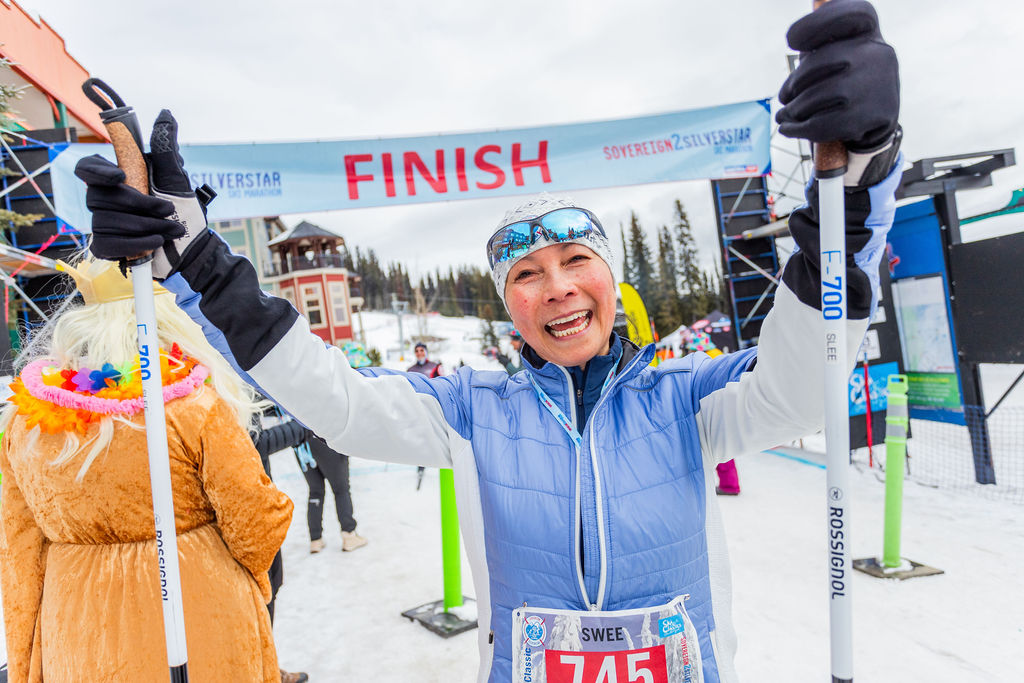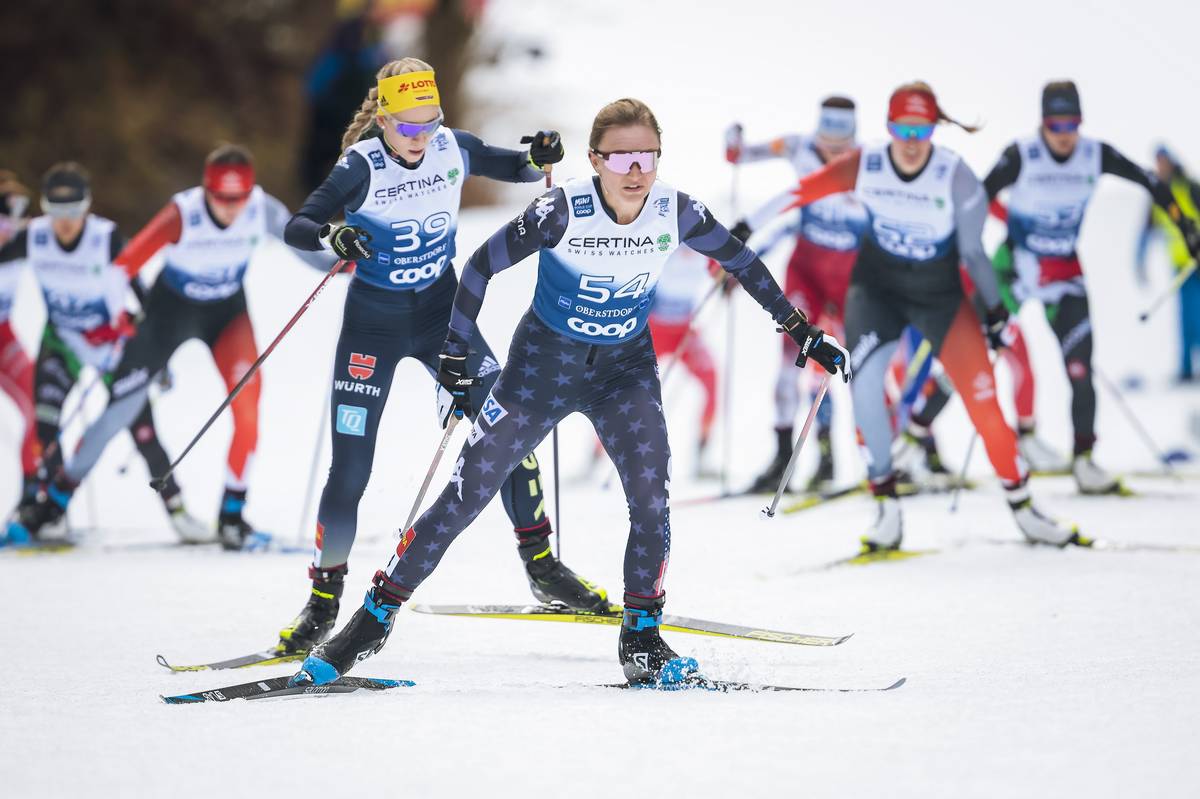The U.S. Ski Orienteering Team sent seven members to the 19th Ski Orienteering World Championships, in Tänndalen, Sweden. The team had one of its most successful championships in its history, headlined by Alison Crocker’s 8th place finish in the Long distance and the women’s 8th place relay finish. Alison is now ranked 33rd in the world, and Alexandra Jospe is now ranked 59th.
The U.S. Ski Orienteering team just returned from one of their most successful years ever at the Ski Orienteering World Championships (Ski WOC), in Tänndalen, Sweden. Ski orienteering combines orienteering with cross country ski racing, adding a thinking component to a pure horsepower event. It’s basically a “choose-your-own-adventure” race: there are sets of points you must visit, in order, but how you get there is up to you to decide.
The Americans fielded seven racers: Alison Crocker (CSU), Alexandra Jospe (CSU), and Cristina Luis (TOC) for the women, and Nikolay Nachev (COC), Adrian Owens (Craftsbury), Scott Pleban (QOC), and Greg Walker (CSU) for the men.
Our first race of the week was the “sprint” distance. The men raced 4.1km, and the women raced 3.1km, on a beautiful sunny spring day, except for a 10-minute snow squall, which opened up just as the women’s red group was starting, penalizing the top seeded skiers. The Americans had a stellar day, especially on the women’s side: Alison finished 18th, and Alexandra finished 24th (of 52). This is by far the best result the U.S. has ever had in international orienteering, so we were all pretty excited. The men had solid results, led by Greg Walker in 51st (of 76).

Ski orienteering in Europe is unique in that the races consist of about 70% narrow trails, that are set to the width of a snowmobile, in a fashion to make the map as confusing as possible. The difficulty lies in interpreting the narrow trail mazes, and deciding what to do at each junction, at top speed. And in blizzards, things become particularly challenging as the little trails steadily disappear under the new snow… On the map, the solid lines represent wide ski trails, and the dashed lines represent narrow snowmobile-width trails. Middle distance races are the most technically challenging ski-o races, in terms of navigation. In this map, there are 21 decision points between control 3 and 4. Given that the leg from 3 – 4 only took 6.5 minutes, those decisions come up really quickly.

Adrian after finishing the middle distance – it’s a bit snowy out there!
The middle distance was the second race, and by then the weather had gone from partly cloudy with chance of blizzard to mostly blizzard with chance of whiteout. The organizers pulled off the race anyway, but it was a tough day to be skiing, not to mention attempting to navigate at the same time. Alison delivered again, with another 18th place, and Alexandra slipped back to 29th, with Cristina rounding out the team in 44th. For the men, Greg led the way again in 50th, followed by Scott (59th), Adrian (61st), and Nikolay (66th). We were all quite relieved to be back inside eating our Swedish meatballs under IKEA lighting after that race – tough day to be outside.
The wind didn’t calm down much overnight or the next day, which was the mixed-gender sprint relay. Based on their results from earlier in the week, Alison and Greg formed the team, and with the rest bravely cheering in the tempest, Alison and Greg skied to a very impressive 12th place finish (of 23), ahead of teams like Germany, Belarus, and Slovakia.

Long distance ski-o races typically contain a bit more skiing than navigating, and Alison showed that day that she could ski with the best in the world, and navigate with them, too! (For anyone unfamiliar with Alison Crocker, she grew up skiing in NENSA programs, raced on US teams at both World Juniors and U23s and made all-American at NCAAs skiing for Dartmouth College). Alison finished in 8th place, beating many skiers from top ski-o countries like Sweden, Norway and Finland. This is hands-down the best result we’ve ever had at any international orienteering race. She was a complete darkhorse, so dark that the organizers didn’t even have a GPS tracker on her, since she hadn’t been ranked high enough prior to the start to be in the top 20 who get GPS units (these make spectating the race a lot more fun, with a giant screen in the stadium showing the progress of the top racers). Alexandra followed with a consistent 25th place, and on the men’s side, Scott led the way in 52nd, with Nikolay in 55th and Greg in 56th. Adrian totaled a ski out there, breaking off both the tip and the tail while trying to take a shortcut.

Buoyed by Alison’s awesome finish, the U.S. team went into the relay with high spirits. The men had been racing consistently, and were quietly showing what hard work can accomplish, despite being a bit overshadowed by the women’s results. The men’s relay went off first, and Scott, Greg, and Adrian fought hard, finishing in 15th – one of the best placings we’ve ever had in the men’s relay at a World Championships. The women went next, and Alison led the charge, coming to the tag in 6th, just behind Finland, and ahead of Sweden. Alexandra took the reins and picked up a place, coming to the tag in 5th. Cristina, the least experienced skier on the squad, lost some time, but managed to hold on for 8th place, one of the highest finishes, out of the most number of countries ever competing, that the U.S. has ever had.
With the 19th Ski WOC in the books, planning for next season’s World Cups is well underway. In another first, the U.S. is hosting 4 World Cup races at Lake Tahoe, which will be combined with the U.S. championships next winter (January 27th – February 5th 2012: http://www.baoc.org/wiki/2012Ski-o_tour), and promises to be the biggest U.S. ski-o event of the winter.





One comment
Jon Fewster
April 8, 2011 at 1:01 am
Congratulations USA! Very impressive results – especially given that North America doesn’t have many opportunities for World-level Ski-O training and racing! It must have been electric to come into the stadium to finish the relay in 8th! Way to go!